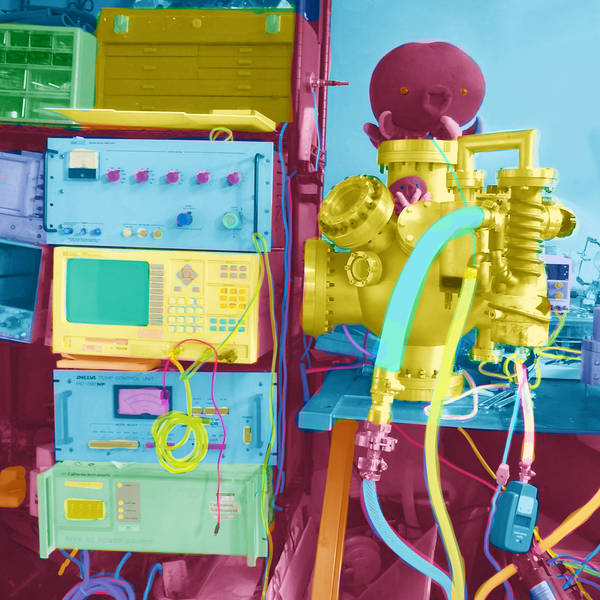
HBM104: Scrapheap Reactor
Max Turnquist advises against wearing shorts while dumpster diving for used lab equipment. Almost every day, Max visits a university parking garage, where there are several small mountains of discarded equipment, some of it quite rare.
Content Note:
Language
It’s where he found his ion pump, and a lot of his rack-mounted monitoring gear and power supplies. He’s building a small nuclear fusion reactor from scratch in his bedroom, and he’s doing it on the cheap.
Viable fusion power has long been a dream of scientists. Once a fusion reaction starts, its only waste products are helium, water, and relatively small amounts of neutron radiation. The fuel for these reactors is often Deuterium (aka. “heavy hydrogen), a common isotope of hydrogen found naturally in seawater. Compared to nuclear fission (the nuclear tech we currently use), fusion seems almost too good to be true—nearly free energy with few downsides.
But there are a number of obstacles in the way. Getting atoms close enough to fuse takes massive amounts of force and heat. In the fusion reactors made by nature (stars), fusion happens because of the ridiculous amounts of gravity that create the high heat needed for this reaction. But here on earth, where sun-like gravity isn’t an option, scientists like Max have to rely on trickier methods.
Max thinks that physicists are intuitive scientists. They observe something many times and gain an inherent knowledge of the universe. He says that the biggest laws that govern the physics are often quite simple, elegant. Max found himself drawn to one of the archimedean solids, and followed his hunch.
His proof of concept reactor has a metal cage in the shape of a truncated icosahedron, a couple inches wide. In this shape, Max suspends particles in a cage of other particles. This shouldn’t be possible, based on Earnshaw’s Theorem, which in layman's terms, means that it’s really hard to keep the particle in the middle from squirting out the sides. But Max’s shape, along with a constantly changing voltage, suspends things in a Goldilocks-type way. He calls this “stably unstable”.
His first proof of concept worked. Now he’s on his second. He says he’s almost ready to do a major fusion test, where he’ll drag his 300 pound reactor out to rural Maine, bury it in the ground and stand a safe distance away (to avoid the neutron radiation). And if it works, he’ll be on to solving the next problem, which is how to actually harvest the power it generates.
Max doesn’t think the solution is a single step away. There are still many hurdles to overcome before fusion replaces the dirty and inefficient power we use today. And maybe those hurdles are too many, maybe it’s a fool’s errand. But he’s hopeful that fusion can save at least part of the world.
A couple more links for you:
Socrates, Plato’s cave and the “known unknowns”
Fluctuations in the Reindeer Population on St. Matthew’s Island
Producer: Jeff Emtman
Editor: Jeff Emtman
Music: The Black Spot, Serocell, Lucky Dragons
Correction: In the episode, we misstate the natural abundance of Deuterium. The correct abundance is .015%. We regret the error.
